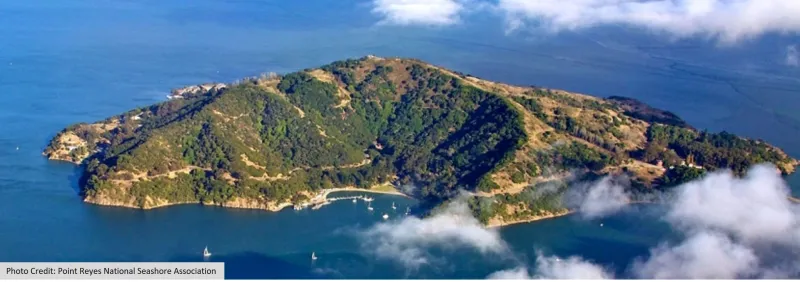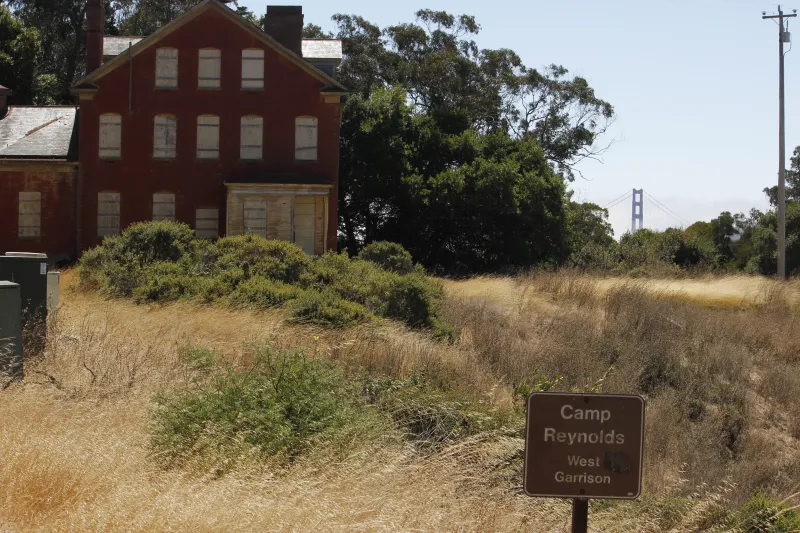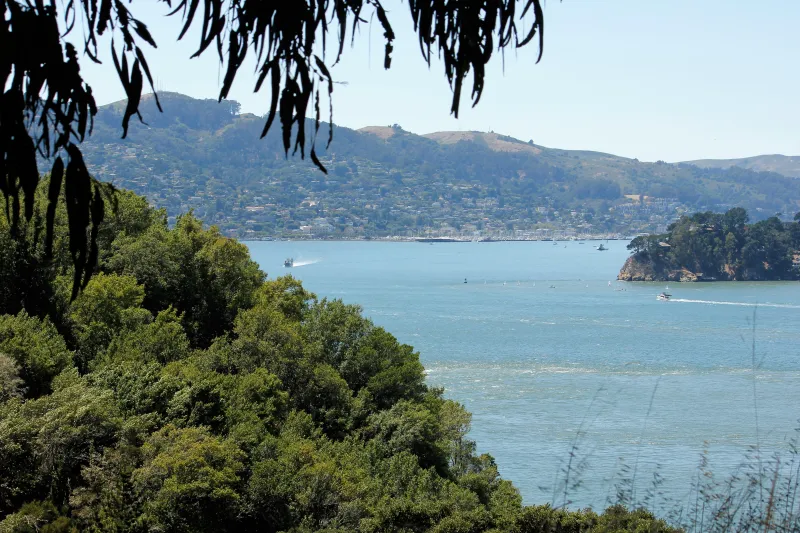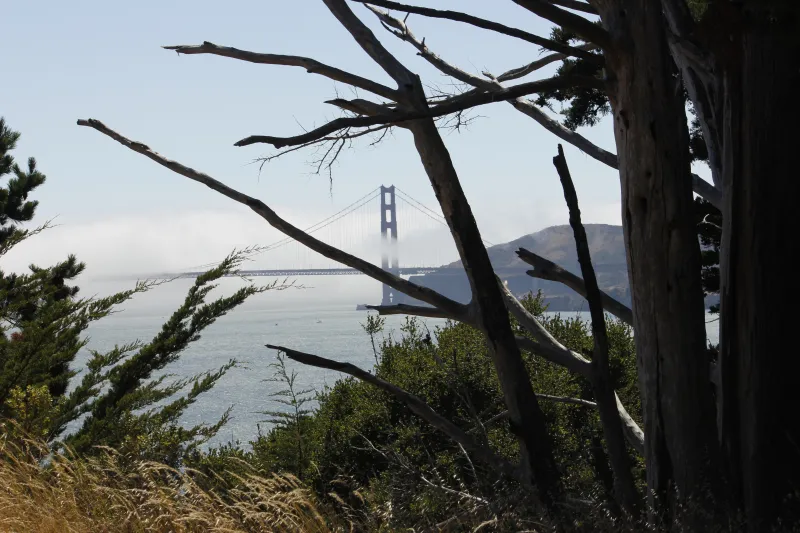Angel Island
Background:
Angel Island, originally names Nuestra Senora de Los Angeles by Juan Manuel del Ayala in 1775, is the second largest island in San Francisco Bay and is designated a California Historic Landmark (Schoenherr et al., 1999). Covering 740 acres, with its tallest point (Mt. Livermore) raising 781 feet above the San Francisco Bay, the island is a place of rich history.

Historically, the island was used as a military fort (Camp Reynolds West Garrison which operated as a coastal defense site during the Civil War), as a Public Health Service Quarantine Station (stations established in 1892 and 1909), and a Bureau of Immigration inspection and detention facility (established in 1902) (Wheeler, 2017).

The various settlements on the island resulted in the introduction of cultivated plants, many of which persist today, and some that have become naturalized such as eucalyptus trees (Schoeneherr et al., 1999). Prior to European contact, the native vegetation on the island was dominated by grasslands and coastal scrub communities, and oak woodlands, dominated by live oak (Quercus agrifolia), intermixed with California bay (Umbellularia californica) and madrone (Arbutus menziesii) (Wheeler, 2017).
The first inhabitants of the island, the Miwok Indians, used fire as a way to promote the establishment of grassland communities, restricting forest and brush to become established on the land (Wheeler, 2017; Angel Island Conservancy). During the 83 year period when the island was under military occupation (from 1863 to 1946), eucalyptus groves were established to help with erosion control, serve as windbreaks, and improve the aesthetics of the island (Wheeler, 2017). The initial 24 acres of blue gum that were planted by the military around the 1870’s, expanded to approximately 86 acres by the mid-1980s. In 1962, after the decommissioning of the Army Nike missile site, the entire island was put under the jurisdiction of the California State Parks and Recreation Department (Schoenherr et al., 1999).
The Problem: The example of eucalyptus removal on Angel Island showcases a controversial situation in which removal of blue gum was deemed necessary since it was considered to represent an increase fire hazard compared to the native plant communities on the island (Boyd, 1997). It has been documented that fires affecting eucalyptus stands burn at higher intensities and given the right conditions (hot and windy), they produce drifting materials that have the potential to ignite spot fires (Boyd, 1997; California Invasive Plant Council, 2014). The proposal for the removal of 80 acres of eucalyptus trees on Angel Island's sparked controversy that has stirred debate among Bay Area environmentalists, and challenged state park policy (Nichols, 1987). A small number of very concerned citizens, formed a group called P.O.E.T. (Preserve Our Eucalyptus Trees) that was dedicated to stopping the project (Boyd, 1997).

Some opinions, echo the idea that even though, eucalyptus trees have historical significance and must be preserved, in some cases removal is necessary to restore native vegetation and to minimize the threat of wildfire (Nichols, 1987; Boyd, 1997). Groups such as the California Native Plant Society are supporters of eucalyptus removal to promote the reestablishment of native plant species. Other groups such as P.O.E.T. are strongly against cutting down eucalyptus trees, admiring them for their beauty, shade, ornamental characteristics, and other valuable properties (Nichols, 1987).
During the late 1980’s plans to control eucalyptus on the island were being developed, since eucalyptus were found to dominate large portions of the landscape, expanding in areas previously home to native plant communities (coastal scrub and grasslands as well as mixed evergreen forest) (Boyd, 1997). In 1996, eucalyptus removal on Angel Island was completed, ten years after the initiation of the eucalyptus removal program. Eighty acres of eucalyptus were to be removed, leaving six acres of historically significant trees, with active restoration work implemented on the sites previously occupied by eucalyptus groves (Boyd, 1997).
Some conservation groups argue that eucalyptus removal was ineffective in preventing large wildfire, since dry native grasslands are more easily ignited than established mature forests (HCN, 2017). Eight years after the removal project, in 2004, the first wildfire occurred, burning 1.5 acres. The following year twenty five acres were affected by fire, while in 2008, over half of the island’s acres (380 acres) were burned (HCN, 2017). The remaining eucalyptus trees were not affected by the large 2008 fire, which primary spread into dried grasses and newly established oak communities (HCN, 2017).
Important Considerations: It is worth noting some important factors in the case of eucalyptus removal on Angel Island such as: public opposition (Preserve Our Eucalyptus Trees - P.O.E.T); high cost of tree removal and transport off the island; weed invasion (Italian thistle (Carduus pycnocephalus), French broom (Genista monspessulana) and Ice plant (Carpobrotus edulis)) in areas previously occupied by eucalyptus; control of exotic annual grasses, and improving the quality of the removal sites as natural areas.

